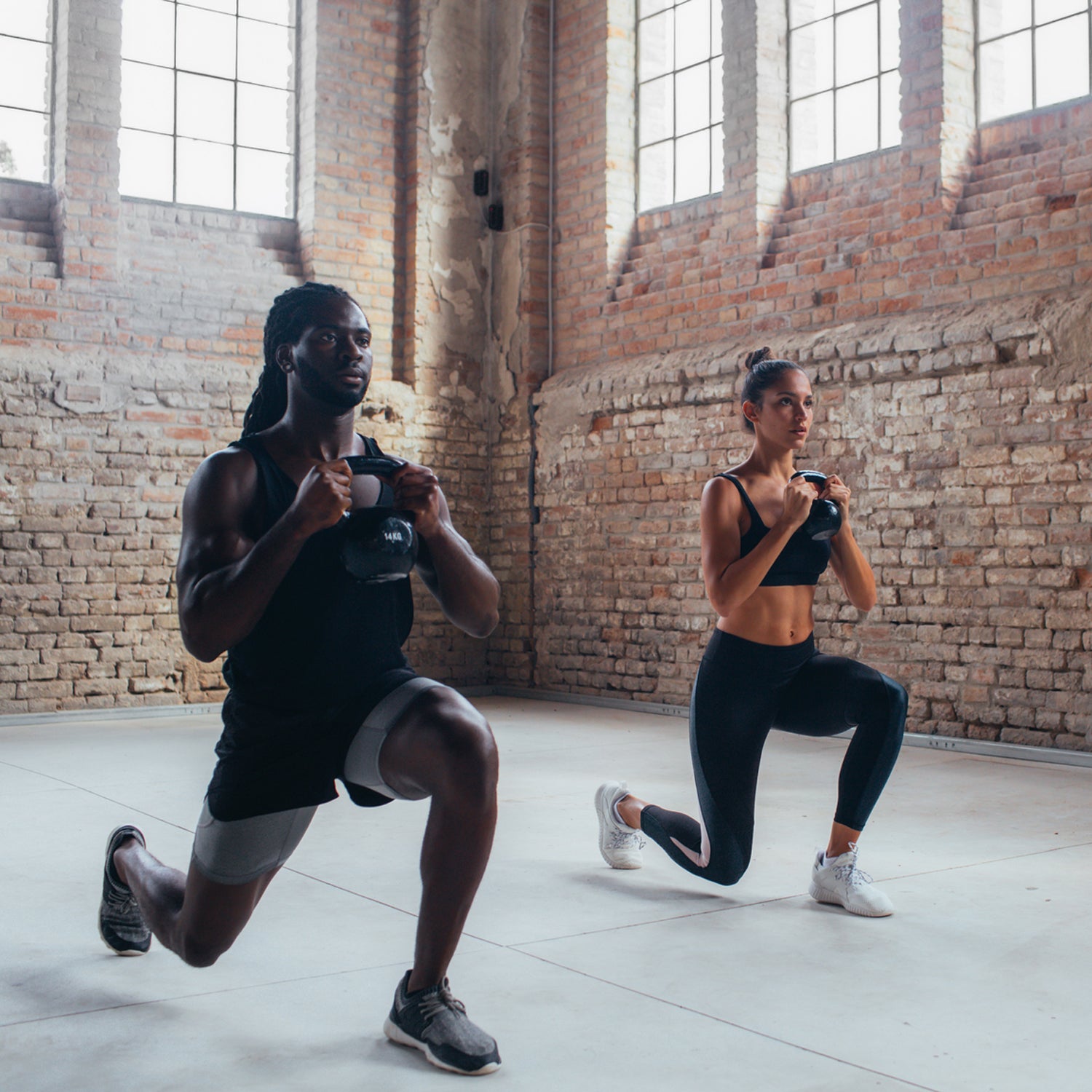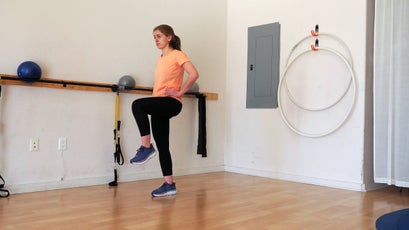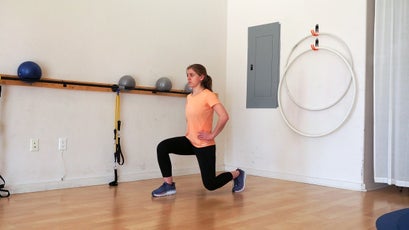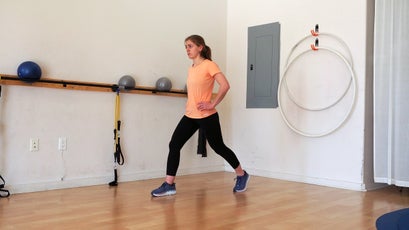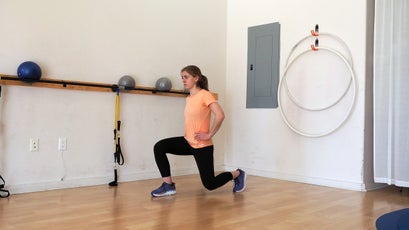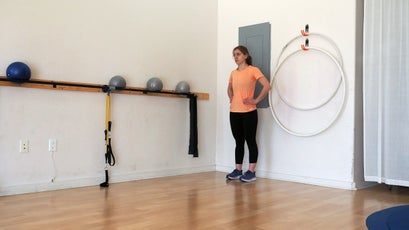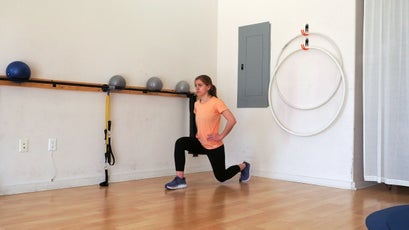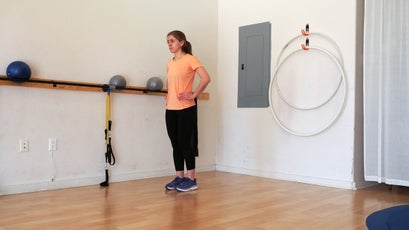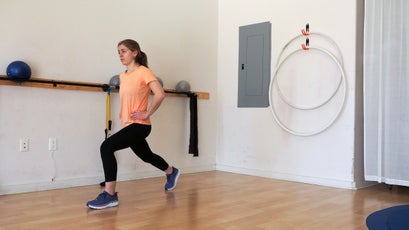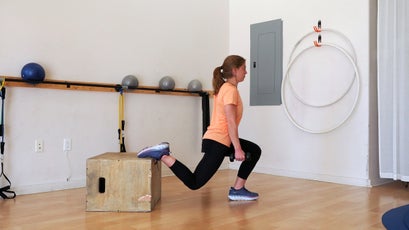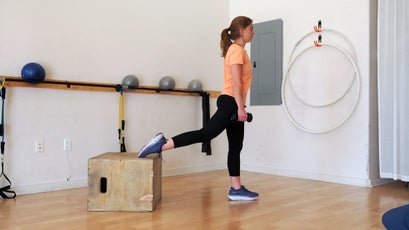Lunges are popular for good reason: you can do them anywhere, they don’t require any equipment, and they’re one of the most effective lower-body workouts. Yet despite the simplicity, or maybe because of it, lunges are often done with poor form. “Really strong people can be really terrible at lunges,” says Kathleen Stabler, a certified instructor and the owner of in Albuquerque, New Mexico. “The movement is actually very complex, and the potential for injury is high.”
While she’s coaching, Stabler sees the same mistakes over and over again: steps that are too small, knees shooting past the toes, instability, bad balance, poor posture. Fast, sloppy lunges are inefficient and lead to a higher risk of injury, especially in the lower back and knees. “I’m a stickler for form, but if you’re working hard toward a goal, you want to maximize what you’re doing and certainly mitigate any risks,” Stabler says. To do so, she adds, “You need to learn the movement from the ground up.”
The Most Common Mistakes
Many people think of lunges as a quad-specific exercise, but the primary mover is actually the gluteus maximus. Your hamstrings, calves, hip stabilizers, and adductors (those muscles on your inner thigh) all get a little love, and your core works hard, too, particularly the obliques and deep lower back. The movement challenges balance, stability, and coordination, and it closely translates to endurance and outdoor sports.
While there are several variations, the basis of the movement is the same. Start with your feet hip-width apart, your hips square and level, and your toes pointed forward. Engage your core, and take an exaggerated step forward or backward. Then lower your hips in a smooth, downward-sweeping arc, until your front thigh is parallel to the floor and your back knee is an inch or two from the ground. Press down through your front heel, and engage your glutes and hamstrings to stand up. Stabler has four key pieces of advice to nail your form:
1. Take a big step to protect your knees and hit the target muscles. “The step needs to be big enough so the knee of your forward leg lines up with your ankle and does not extend beyond your toes,” Stabler says. Shorter steps emphasize the quadriceps, whereas longer lunges emphasize the glutes. Outdoor athletes tend to be quad dominant already and lack control of the posterior chain (the muscles along the back of the leg), says Stabler.
2. Keep your knees in line. If your knees collapse inward during the lunge movement, that’s a sign of inadequate knee control and can lead to pain. If you have wobbly knees, hold off on the lunges and first work on side steps and backward skates with resistance bands to improve your knee control by strengthening your stabilizers, like your glutei medii.
3. Check out your posture. Many people lean too far forward or round their lower back. Good form involves a strong, stable center line. When you lunge, keep your pelvis neutral, your chest lifted, and your torso upright so that your spine is stacked vertically. “If you’re not lined up properly, you’re working against yourself, off of your center of gravity, and inefficient, so the chance of injury is higher,” Stabler says.
4. Slow down. Stabler frequently catches people rushing through the exercise, which is inefficient and increases their risk of injury. When you perform lunges, move slowly and deliberately. Pay attention to form, and focus on the mechanics instead of busting out junk reps.
How to Progress Into a Perfect Lunge
Start with body-weight stationary lunges. Once you’ve mastered the form with each leg, add movement with walking lunges. Then try adding weight or experimenting with Bulgarian split squats to increase the challenge. You can do all three variations while holding dumbbells or kettlebells, like a farmer’s carry (which also builds grip strength), wearing a weighted vest, or with a barbell on your shoulders.
Pick one variation to add to your leg day or your . If you’re using weights, start out with a body-weight variation to warm up. For example, if you’re doing weighted Bulgarian split squats as your main strengthener, do a round or two of body-weight walking lunges first.
Stationary Lunge
What it does: Primarily strengthens the glutes, quads, and adductor magnus (inner thigh), while also working the hamstrings, calves, hip stabilizers, and core.
How to do it: Stand tall, with your feet hip-width apart and your toes pointed forward. Lift one leg in front of you, with your knee bent to 90 degrees, until your thigh is parallel to the floor (this will help you square your hips and engage your core for stability), then take a big step backward. Bend your front knee to lower your body into the lunge until your front thigh is parallel to the floor, pause for a second, then engage both legs to stand. Keep your feet in place, and complete all reps on one side, then switch.
Hold your chest high and keep your pelvis neutral and your torso straight and upright throughout the movement. Your body should move up and down vertically, rather than shift back and forth.
If you’re struggling with knee position, try this in front of a wall: stand with the tips of your shoes touching the wall, then step backward into the lunge. The wall prevents your front knee from going beyond your toes. Stick with it until you have an understanding of the movement, then try it again away from the wall.
Volume: Three sets of ten reps on each leg. Rest for one to two minutes between sets.
Walking Lunge
What it does: Strengthens the same muscles as the stationary lunge while adding movement to train balance.
How to do it: Stand tall, with your feet hip-width apart and your toes pointed forward. Engage your core and square your hips. Step forward (between two to three feet in distance, depending on your height), landing first with the heel, then the forefoot to soften the impact (but always keep the front heel down). In one smooth, continuous motion, sink your hips to lower into the lunge until your front thigh is parallel to the floor. (Be mindful that your front knee does not dive inward or go beyond your toes.) Pause for a second, then engage both legs to stand, and bring the rear leg forward to meet the other. Step forward again with the previously trailing leg so you’re alternating legs each step.
Start with body weight only in a forward direction, then try the move walking backward for an extra challenge. Progress by holding a dumbbell or kettlebell on each side. For an added core and stability workout, try holding a single weight overhead with one arm (switch arms each set).
Volume: Three sets of ten reps on each leg. Rest for one to two minutes between sets.
Single-Leg Split Squat (Bulgarian Split Squat)
What it does: A cross between a lunge and a squat, this move strengthens the lunging muscles but places more emphasis on the front leg, making it a great choice if you’re hoping to stimulate muscle growth. As such, it also comes with a higher risk of injury, so you shouldn’t attempt this until you can do a stationary lunge with excellent form.
How to do it: Stand with your back to a bench or a box that’s midshin to knee height (opt for something lower if you have tight hip flexors) and approximately two feet away. Reach one leg behind you, and place your toes on the box, with the sole of your foot pointing directly back. Keep your pelvis neutral, your chest high, and your back straight. Then bend your front knee to slowly sink into the lunge until your back knee is an inch or two from the ground. This is the starting position. Engage your glutes and hamstrings to stand up, then lower your back into the lunge for one repetition. On the tenth and final rep, hold the lowered position for ten seconds. Complete all reps on one leg, then switch and repeat on the other side without resting in between.
Volume: If you’re using body weight only, do three sets of ten reps on each leg, with a ten-second hold in the down position on the final rep of each set. If you’re using weights, do three to five sets of six to eight reps. Rest for two to three minutes between sets.


